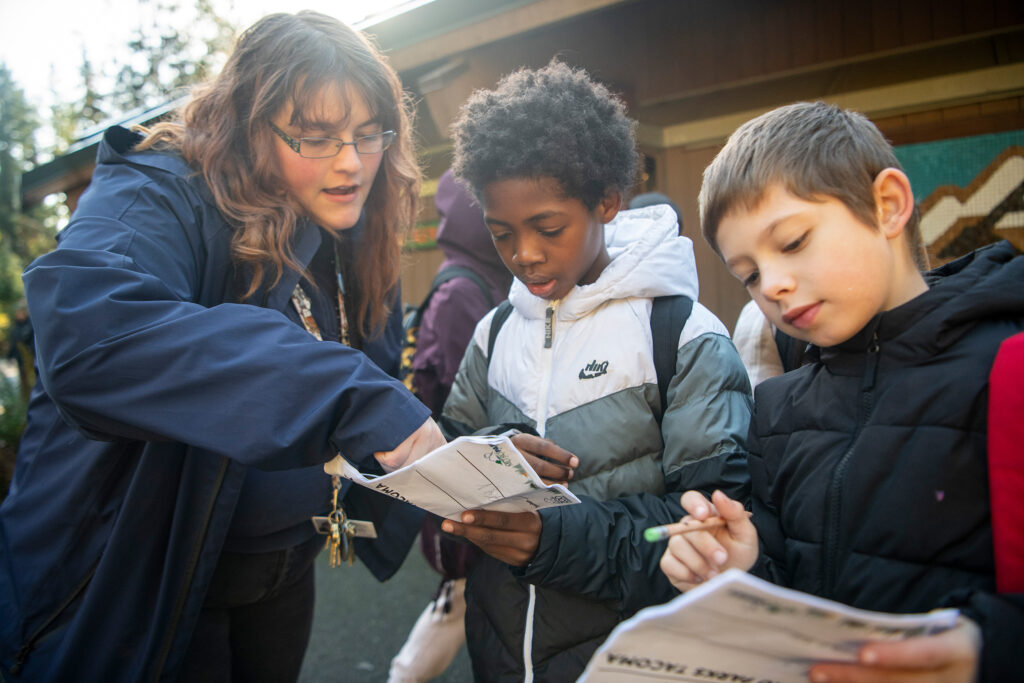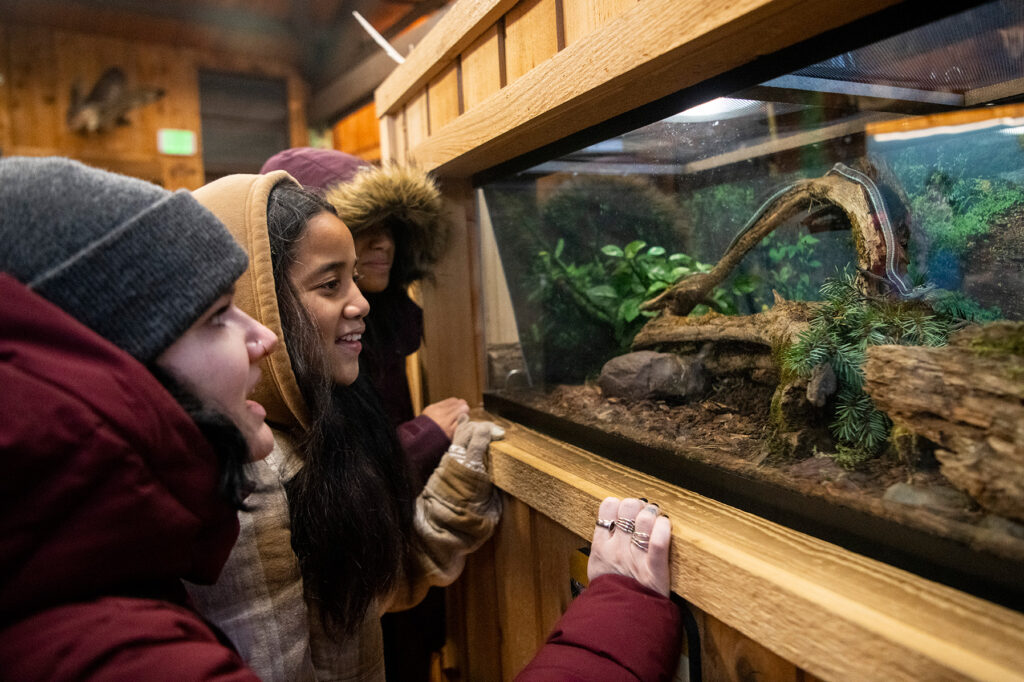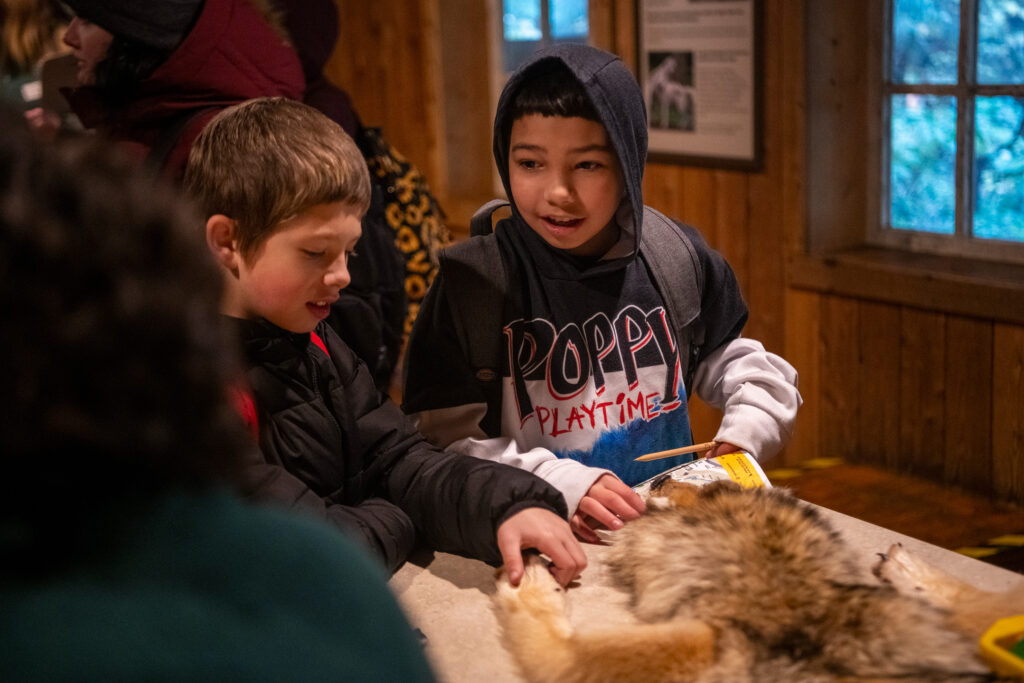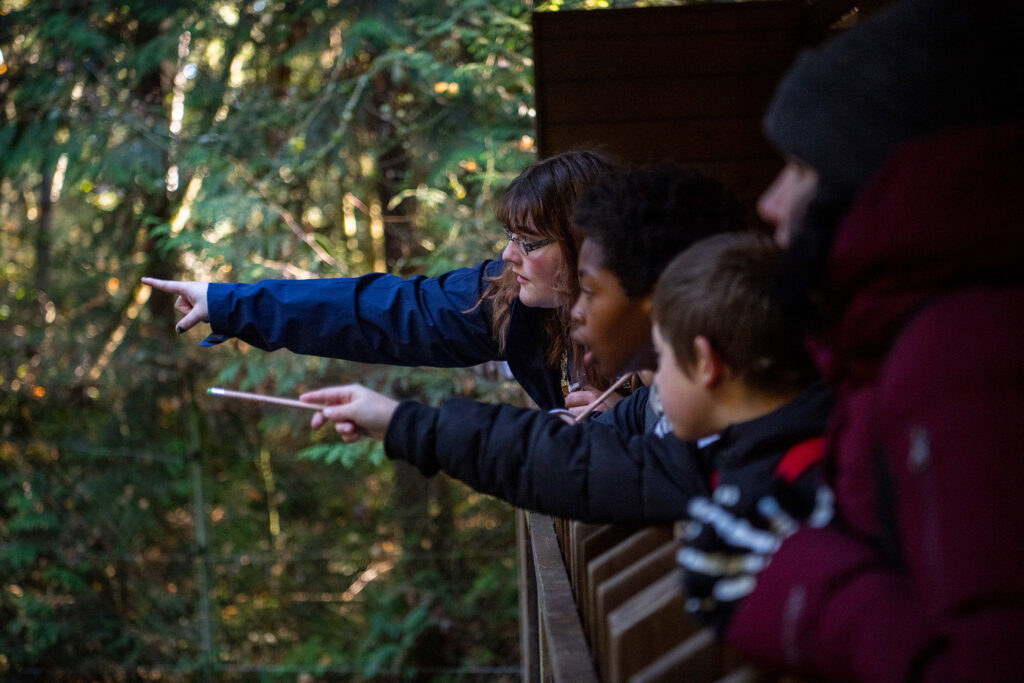On a chilly, sunny November morning in Eatonville, more than 150 third, fourth, and fifth-grade students from Tacoma’s Lister Elementary gathered at the entrance to Northwest Trek Wildlife Park.
“We can’t wait to see the bears!” “The wolves!” “The cougar!” students all chimed in, bundled up in jackets and hats. Their excitement far outweighed the 40-degree temperature.
They split up into small groups and gathered around a park map.
“Where should we start?” asked fifth-grade teacher Anna Paker.
“The bobcats!” her group of five students exclaimed, and off they were to explore the cat loop.
Immediately, the students pointed out the difference in the coloring of the bobcats’ coats. Tanner the bobcat has more brown in his coat, while Tahoma has more gray tones.
“Great observations!” complimented Kendra Vance, an education program specialist from Point Defiance Zoo & Aquarium who works weekly with many of the students at Lister Elementary.
Vance plays an integral role in the Wildlife Champions program, an award-winning partnership of Point Defiance Zoo and Northwest Trek Wildlife Park, their umbrella agency Metro Parks Tacoma, and Tacoma Public Schools designed to teach empathy for wildlife through nature-based science.
Working closely with teachers, staff from the Zoo, Northwest Trek Wildlife Park, and Tacoma Nature Center offer weekly classes for every Lister Elementary kindergarten through fifth grade student and hit Next Generation science standards, as well as math, language, arts, and Washington’s Since Time Immemorial studies.
It’s the hands-on aspect that kids find really enjoyable. Activities range from making windsocks to chalk art about salmon life cycles, planting camas bulbs, and free field trips to both the Zoo and Northwest Trek.
Wildlife Champions is rooted in a major study by Zoo conservation engagement staff, in collaboration with Woodland Park Zoo and Seattle Aquarium, investigating how psychological principles of empathy could be applied to behavior change benefitting nature and wildlife. Research shows that urban children – especially those in high-diversity, historically underserved neighborhoods – have less and less connection to nature. Lister Elementary is located within one of Tacoma’s most diverse and traditionally underserved neighborhoods: the Salishan community on the city’s Eastside, boasting the vast forest, canyon, and salmon-bearing stream of Swan Creek Park. Students visit the park monthly with Zoo staff to engage with nature.
Back at the field trip at Northwest Trek, you can see the students actively using what they’ve been taught, like observation skills.
“Look at Carly, the cougar. She’s stalking a bird!” some boys said as they watched in awe.
“So far this year, they learned about the necessities for animals like food, water, and shelter,” said Vance. “They’ve also learned about food webs and how each organism has a job to do in the ecosystem.”
Without prompting, one girl noticed a food web sign in the wildlife park and called over to her classmates. They all squished together to get a close look at it.
“They just took a test on food webs yesterday,” said Parker.
In the Baker Cabin, the students had a chance to warm up and see their fifth-grade class mascot, the gray wolves.
“Ms. Parker, I touched a wolf pelt!” one of the children exclaimed.
One of the final stops on their trip was the owls and eagles.
“Ms. Parker, that one is the female snowy owl, and that one is the male. Females have more spots on their chests,” said 10-year-old Chris.
“We learned that fact last year when the snowy owl was our mascot!” 10-year-old Manuel chimed in.
Vance and Parker looked at each other with a warm smile. All the lessons were making a difference.



